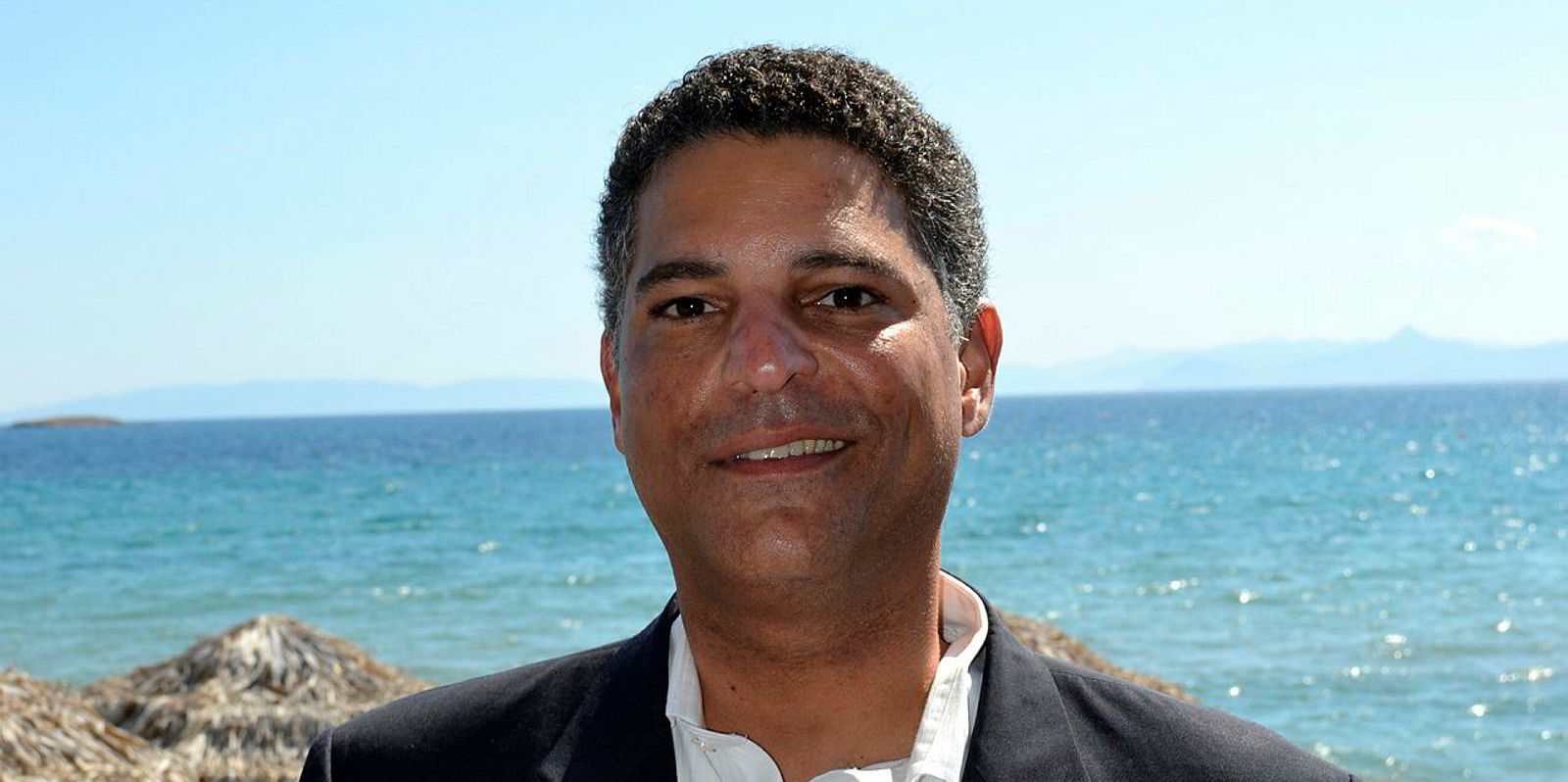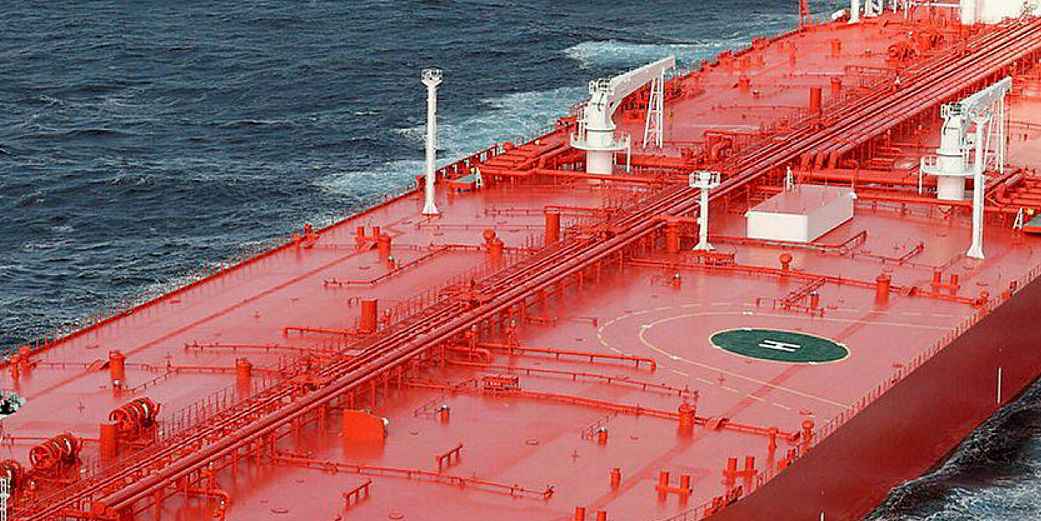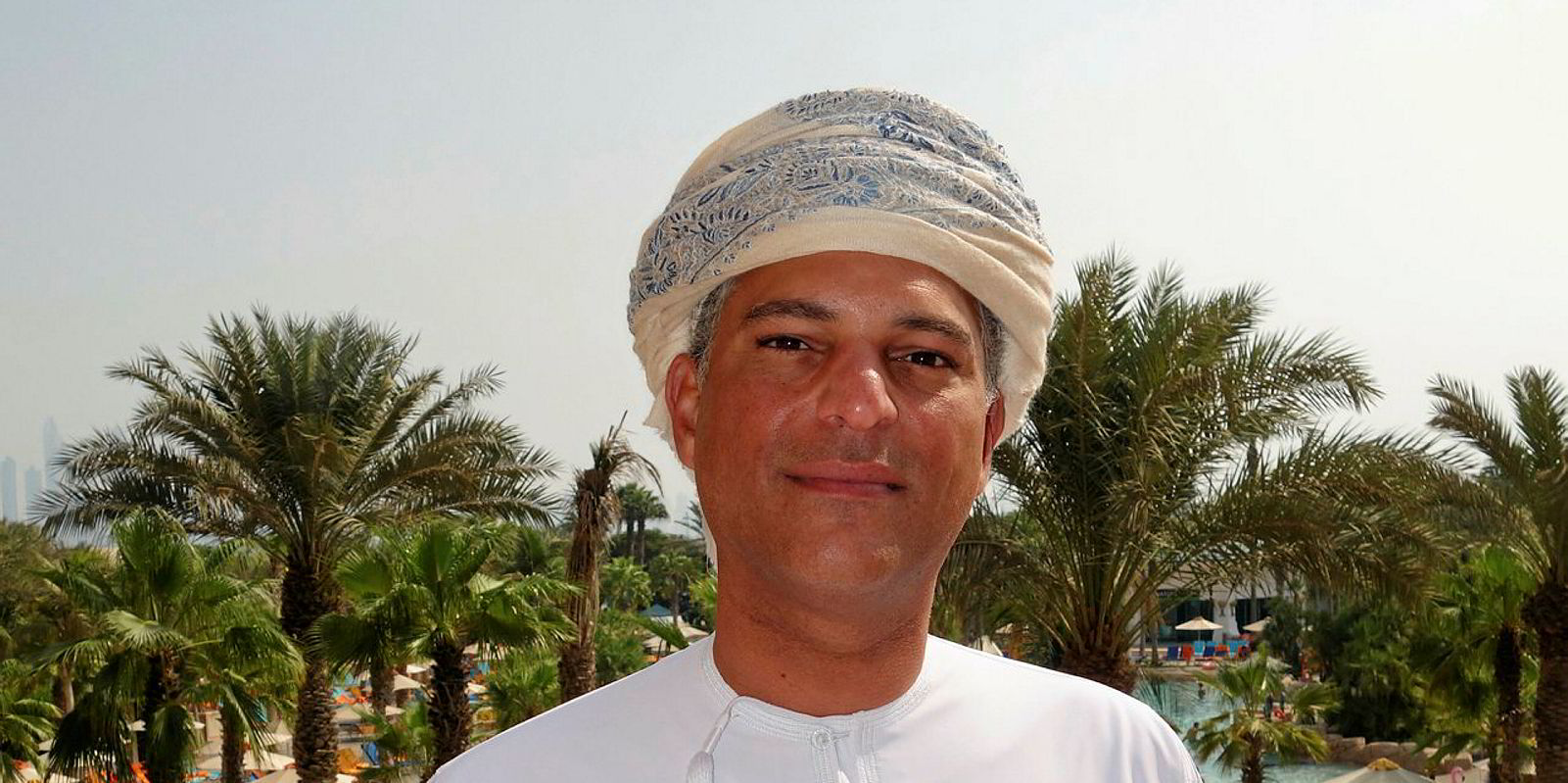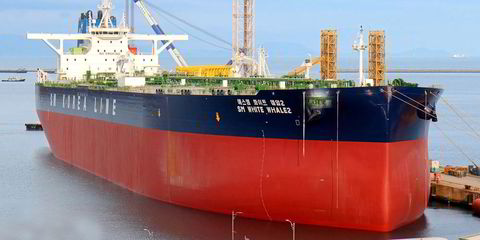Industry veteran Michael Jorgensen has had a busy start after assuming the role of acting chief executive at Oman Shipping Co (OSC), which he joined in November 2017 as group chief financial officer.
After he stepped into the role left by the resignation of long-serving chief executive Tarik Al Junaidi, the company confirmed last week that it ordered two VLCCs in South Korea.
OSC revealed this week that it aims to expand into the dry cargo and containership sectors.
Jorgensen tells TradeWinds he is pleased that the company’s shareholders have signed off on the new business strategy plan that will see it begin a large-scale fleet-replacement programme and expand further in areas beyond the transportation of hydrocarbons.
He credits Al Junaidi for pushing the plan through and getting approval from its majority shareholder, ASYAD, also known as Oman National Logistics Group.
It is a state-owned umbrella organisation that controls a collection of 17 transport companies that includes the country’s main ports, Oman Drydock and National Ferries Co, better known as Oman Ferries.

ASYAD holds a 79.9% stake in OSC, Oman Oil Co has a 20% share and Oman Rail holds the remaining 0.01%.
“It is a growth strategy for us,” Jorgensen says. “We have a clear mandate from our shareholders to move forward.”
The plan calls for a renewal of the tanker fleet and a strong focus on containerships and dry bulk tonnage to support the Sultan of Oman Logistics Strategy 2040 (SOLS 2040), a government initiative to diversify the country’s economy beyond oil and gas.
With Al Junaidi garnering the applause for the new strategy, why then did he leave the company after 14 years, the last six of which were as chief executive?
“Tarik wanted to go out and do his own thing," Jorgensen says. "His family has its own business interests and he has a strong entrepreneurial spirit. He left the company in very good shape.”
Jorgensen, whose CV includes being CFO at Maersk Line and Norden, will hold the fort until a new chief executive is recruited. He says it is up to the board to decide who is appointed, and when.
Replacement programme
Last week, TradeWinds broke the news that OSC was ordering two 300,000-dwt tankers at South Korean shipbuilder DSME for delivery in the fourth quarter of 2020.
Jorgensen says the contract has now been signed with the ships part of a larger fleet-replacement plan. Timely is a word that he bandies about when discussing this plan.
“You need to do things in a timely manner and work the markets to your advantage,” he says. “With the 2020 sulphur cap looming, it is important to have modern, fuel-efficient ships. We decided to order because we got a good offer from DSME.”
While Jorgensen does not indicate that any optional vessels were included in the contract, he suggests that more orders might be in the offing.
“We cannot rule out more ships in the future,” he says.
OSC has a fleet of 16 VLCCs and, with the DSME order attributed to fleet-replacement purposes, it is likely the company will begin shedding older units ahead of their delivery.
Suggestions have been circulating among London brokers that OSC has already been allowing interested parties to inspect its two oldest VLCCs, the 320,000-dwt Manah and Marbat (both built 2008).
The vessels are described as being of quite high-specification and valued in the mid-to-high $40m range.

Jorgensen claims that the ships are not officially for sale, and shedding tonnage at this early stage is not a priority.
With the 2020 sulphur cap looming, it is important to have modern, fuel-efficient ships. We decided to order because we got a good offer from DSME
Michael Jorgensen, acting CEO of Oman Shipping Co
“Timely fleet replacement also involves planning for the sale of ships," he says. "While we only plan on selling in the future, if someone were to put an interesting offer on the table now we will of course take a look at it.”
Jorgensen notes that the market for secondhand VLCCs has improved a lot over the past six to eight months.
“The appetite for secondhand VLCCs is growing," he says. "We have seen a healthy rise in prices for 10-year-old ships.”
OSC has handled the commercial management of its VLCCs inhouse for the past year after pulling them out of pools — a move that Jorgensen says has proved very successful.
About 70% of its VLCC capacity is working on various long-term charters and cargo contracts, while the remaining 30% is deployed in the spot market, working for what is described as “all the usual suspects”.
Outside of crude, the company has 17 product tankers and four chemical tankers. A series of 10 MR2 product tankers of 45,900 dwt were ordered against charters to Shell as part of the oil major's Project Silver programme.
OSC is keen to grow its product and chemical tanker fleet to gain a larger share of cargoes that are flowing in ever-increasing volumes from regional refineries and chemical plants, including projects under development at the ports of Sohar and Duqm.
“We want to position ourselves to take advantage of the many refinery and chemical plants coming up in the region," Jorgensen says. "It will not happen tomorrow, but it is part of the overall plan.”
Box and dry push
With his Maersk Line background, it comes as no surprise to learn from Jorgensen that OSC is prioritising the development of subsidiary Oman Container Line (OCL), which currently operates a couple of liner services along the Omani coast and to the United Arab Emirates using chartered tonnage.
OSC wants to build OCL into a regional liner player, and Jorgensen points out that Oman is perfectly positioned between India, the Middle East and East Africa.
“There is a strong development of container transport going on in the region," he says. "We want to tap into this and be an agile player that will provide value both as a carrier of the cargoes of regional customers and as a feeder operator for mainline carriers.”
OSC, which also has an LNG fleet, has indicated for at least the past two years that it wanted to expand its dry bulk division into the Omani aggregates business to export gypsum and limestone with a fleet of supramax bulkers.
With a very fragmented mining industry now being consolidated under Oman Mining Corp, it has begun to make its move.
A dry bulk chartering desk has been established in the company’s Muscat headquarters, with vessels sourced from the charter market.
OSC’s goal of acquiring secondhand bulkers is still on the cards, most likely once the new chartering desk and a solid cargo base are firmly established.
OSC already has a strong foothold in dry bulk, with a fleet of four VLOCs that are exclusively dedicated to carrying Vale's Oman iron-ore imports from Brazil, and two supramaxes that are on long-term contracts to transport all of Sohar Aluminium’s bauxite imports from Australia.








